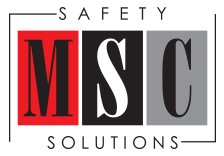What’s your method for Conflict Resolution?
Working in the Health and Safety Industry as a Safety Professional can be challenging at times, believe it or not. Sometimes we do get push back when discussing safety procedures. I know, hard to believe, but it happens. In my younger years, I struggled with this especially if the person arguing was my senior or I wasn’t confident in my knowledge. This struggle caused me to develop a technique to stop arguing about the problem and to start talking about solutions. I call it the 20/20/60 conversation. This is also a technique I use at home and have found since using it, I don’t sleep in the doghouse…. as often.
The concept is simple:
20% of the conversation is spent talking about the problem, violation, or disagreement.
20% of the conversation is spent talking about what could or will happen if we do not resolve the issue.
60% of the conversation is spent talking about the solution or options to resolve the issue. Talking about the problem does not fix anything. Talking about solutions is productive.
This is the key to Conflict Resolution.
When identifying deficiencies in safety, production, or quality, we need to have an open dialog with our employees, coworkers, and friends. Approaching them in a positive manner and opening the conversation with a positive attitude will help get you off on the right foot. If the person you approach is defensive or combative at the onset of the conversation, try using a questioning approach.
For example, if an employee is improperly using a ladder, “Have you had ladder training?”, “Have you been advised that you cannot stand on the top step?”, “So why are you standing on the top step?”. You have just opened a positive dialog and if you listen, the employee will sense that you care. It is important to develop respect, and you have to give respect to get respect. Let the employee talk and you LISTEN. Then we want to address the at-risk behavior. If you listened you might find out the employee doesn’t have a taller ladder or that he hasn’t had proper training. Help him find the proper tool for the job or get him trained. You might even find that the employee’s intentions are in the right place and he just doesn’t understand why it’s important to not stand on the top step. This is 20% of the conversation. Talking about the problem and understanding why it exists. Then move on.
Next, we need to discuss what could or will happen if we don’t resolve the issue. This is twofold. One, a person could fall and injure themselves if they stand on the top step plus, there are all the underlying ramifications that come with a job site injury. Two, we can’t just state you can’t do that and walk away. The job must move forward in a timely manner. If we don’t get a taller ladder or another means of access, we are delaying the project. So, if we don’t correct this issue, we could have an injury and/or possibly delay the project. The employee needs to have a firm understanding of where we are coming from and why finding a solution is important to both parties. This is 20% of the conversation. Then move on.
Finally, let’s talk options. Let’s talk solutions. This is 60% of the conversation. How do we fix this? How can we find a way to work safely and keep the project moving forward? This again is a time to listen. Most people who are doing something wrong, know they are doing something wrong, and know how to do it right. Ask, “How can we fix this and how can I help?” And even more importantly, follow through and HELP! Discussing options and finding a team-driven solution will create a sense of loyalty and respect. Your employee will tend to feel that you care and respect their opinion. At the end of the day, most of us need to feel respected, that our supervisors listen, and they actively care about what we have to say. Conflict resolution is about working together and moving forward.
I hope that my technique is helpful. You can spend your day arguing or you can spend it talking about solutions. I know in my house; life has dramatically improved using this method. Remember, spend 20% of the conversation talking about the issue, 20% about consequences, and spend the rest the time coming to a team driven resolution. This is the foundation as to why our company name is MSC Safety Solutions. Focus on the solution, not the problem.





